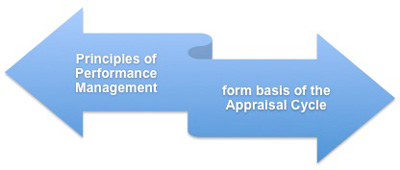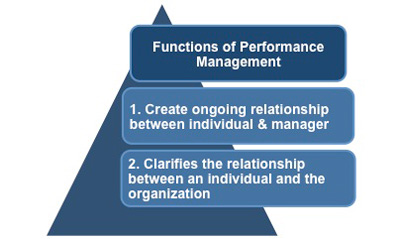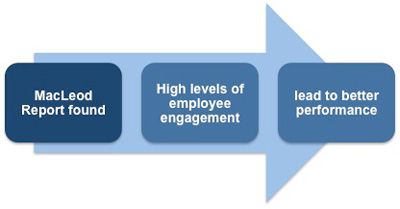Performance Management Cycle
One of the most important aspects of management is that of monitoring and improving performance. Many managers never receive any formal training in this critical area and are left to interpret things on their own or base their behavior on what their own annual appraisals have shown them.
Even if your organization provides a manual describing the appraisal process it is unlikely to explain fundamental principles behind performance management. This often leaves managers feeling they have little support and guidance in this crucial area.
The 'Appraisal Skills' set of eBooks is designed to provide you with a firm understanding of the principles behind performance management as well as provide practical advice for each stage of the process.
 |
You then need to adapt these performance management principles to suit the culture of your organization and its own appraisal process.
This cyclical appraisal process is usually conducted on an annual basis and is a vital aspect of managing your organization's overall performance. Your responsibility as a manager is to ensure that the annual appraisals you conduct are effective and have a positive impact on your team's performance.
A well-designed and effective appraisal process has two important functions. Firstly, it forms a clear basis for the ongoing relationship between a team member and their manager. Secondly, it creates an effective performance management system that clarifies the relationship between the individual and the organization.
 |
This second function is frequently neglected or poorly defined even though it is equally important. By clearly showing a team member how their role contributes to the success of the department, division, and therefore the organization as a whole increases the degree to which that individual will 'engage' with the goals of the organization.
This level of engagement is something that changes over time depending on how well the day-to-day activities of the department are progressing and the degree of empathy there is between the personalities of the employee and the manager. Understanding how your own personality and role as a manager can influence the performance of others is vital to your success in getting the best performance from those who report to you.
This correlation between high levels of performance and employee 'engagement' was the subject of the MacLeod Report, which was commissioned by the UK government in 2009. This report, by David MacLeod and Nita Clarke, took an in-depth look at employee engagement and its potential performance benefits for both organizations and employees.
 |
The MacLeod Report pointed to a number of studies that demonstrate that high levels of engagement lead to better financial performance in the private sector and better outcomes in the public sector.
The report identified the four main drivers of employee engagement as:
1. Leadership that ensures a strong, transparent, and explicit organizational culture that gives employees a line of sight between their job and the vision and aims of the organization.
2. Engaging managers who offer clarity, show appreciation of employees' effort and contribution, treat their people as individuals, and ensure that work is organized efficiently and effectively so that employees feel they are valued, and equipped and supported to do their job.
3. Employees feeling they are able to voice their ideas and be listened to, both about how they do their job and in decision making in their own department, with sharing of problems and challenges and a commitment to arrive at joint solutions.
4. Employees believing that the organization is fully committed to the values that it promotes, and that behavior throughout the organization is consistent with these stated values. This leads to trust and integrity, whereas any gap between these creates distrust and cynicism.
You can activate each of these drivers through the appraisal process by making sure that your own behavior supports them wherever possible.
As a manager there are certain things you can do within the appraisal process to help you maximize engagement and encourage your team to attain high levels of performance. You can use the mnemonic OSCAR to help you to remember these behaviors and incorporate them into the appraisal process.
You can also set SMART goals (ones that are Specific, Measurable, Attainable, Relevant, and Time bound). Once set, these goals must then be monitored and feedback given to the individual to ensure that the goals are attained. As part of your information gathering, you need to include and note your observations of the competencies an individual displays. 'Competencies' can be defined as the way in which a team member works towards their objectives. Does the member's behavior match the responsibilities of their role?
An essential part of being able to measure performance is being able to assess performance against the role description. Assessing performance is a continuous cycle comprising several discrete steps. The adoption of the OSCAR performance management principles described earlier will enable you to work through this process in an efficient and structured way. It will also ensure that the expectations you have of your team members match the expectations that each individual has of themselves.
You may also be interested in:
OSCAR Principles of Performance Management | Setting SMART Goals and Objectives | Matching Competencies to Roles | Performance Appraisal Role Description | Appraisal Process Steps | Stages of the Appraisal Process.



